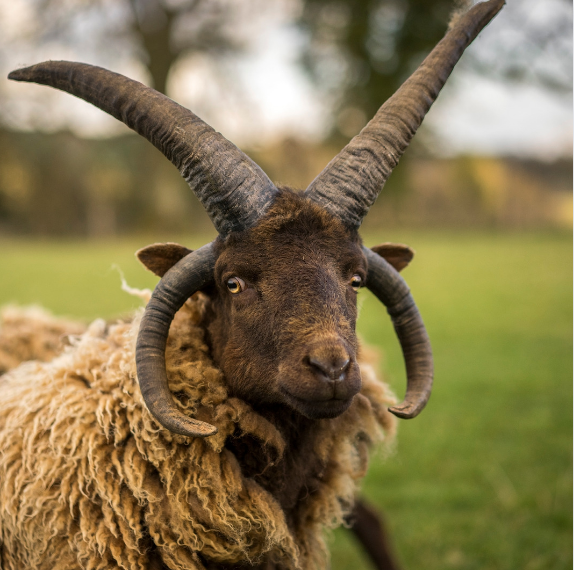Wools of the UK: Manx Loaghtan

The rare breed sheep with a name that many struggle to pronounce! The Manx Loaghtan (pronounced locktun) nearly became extinct in the 1950s, but thanks to the hard work of Manx National Heritage the breed is now increasing in number.
Colour
Manx Loaghtan are naturally brown with shades that vary between a dark fawn and chestnut brown. The general shade of the sheep can be classed as moorit; a word also used for the colour of some shades of Shetland sheep. Their legs and faces tend to be a darker shade of brown than their wool, with lambs being born a deep brown and paling as they grow older.
Staple Length
Average 80mm
Micron Count
29 – 31mic
Country of Origin
British Isles, specifically the Isle of Man
History
Manx Loaghtans have been living on the Isle of Man for over 1,000 years, which is pretty impressive! It is thought that the breed could have originated from Scotland before then as they share some unique characteristics with primitive breeds such as naturally short tails and smaller stature.
Even though the breed had been around for a long period of time, it was on the brink of extinction in the 1950s with only 43 sheep known to exist. It took a lot of hard work from dedicated breeders to bring the breed back and help it to thrive once again. You can now find flocks all over the UK as well as on the Isle of Man. The Rare Breeds Survival Trust still classes this breed as ‘At Risk’ meaning that the population is lower than would be preferred to secure the future of the breed.
Uses
The Manx Loaghtan has established itself as a dual-purpose breed meaning that it can be used for both meat and wool production; Manx meat even has special Designation of Origin status.
The wool has a short to medium staple length and excellent spring making Is perfect for hand spinning. The natural brown shades also means that those wanting to work with natural colours have another shade of brown to add to their collection! In terms of processing the fibre can be woollen or worsted spun and lends itself to knitting and weaving projects alike. For those who like felting Manx is very easy to use! It needle felts well and will wet felt with ease (though not as quickly as a Merino would)
Did you know… The Manx Loaghtans is a polycerate which means they have more than two horns; many have four but individuals have been found with six!
Link to website
You can get your hands on Manx though our website here






